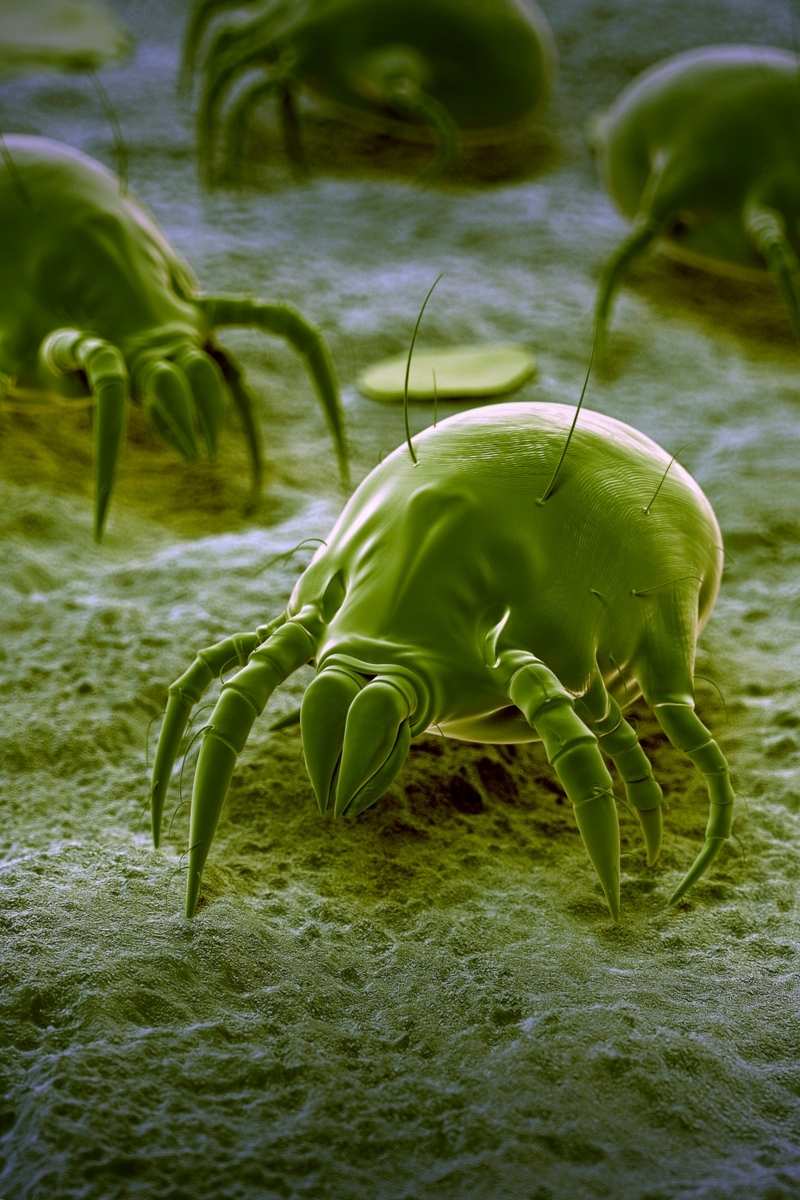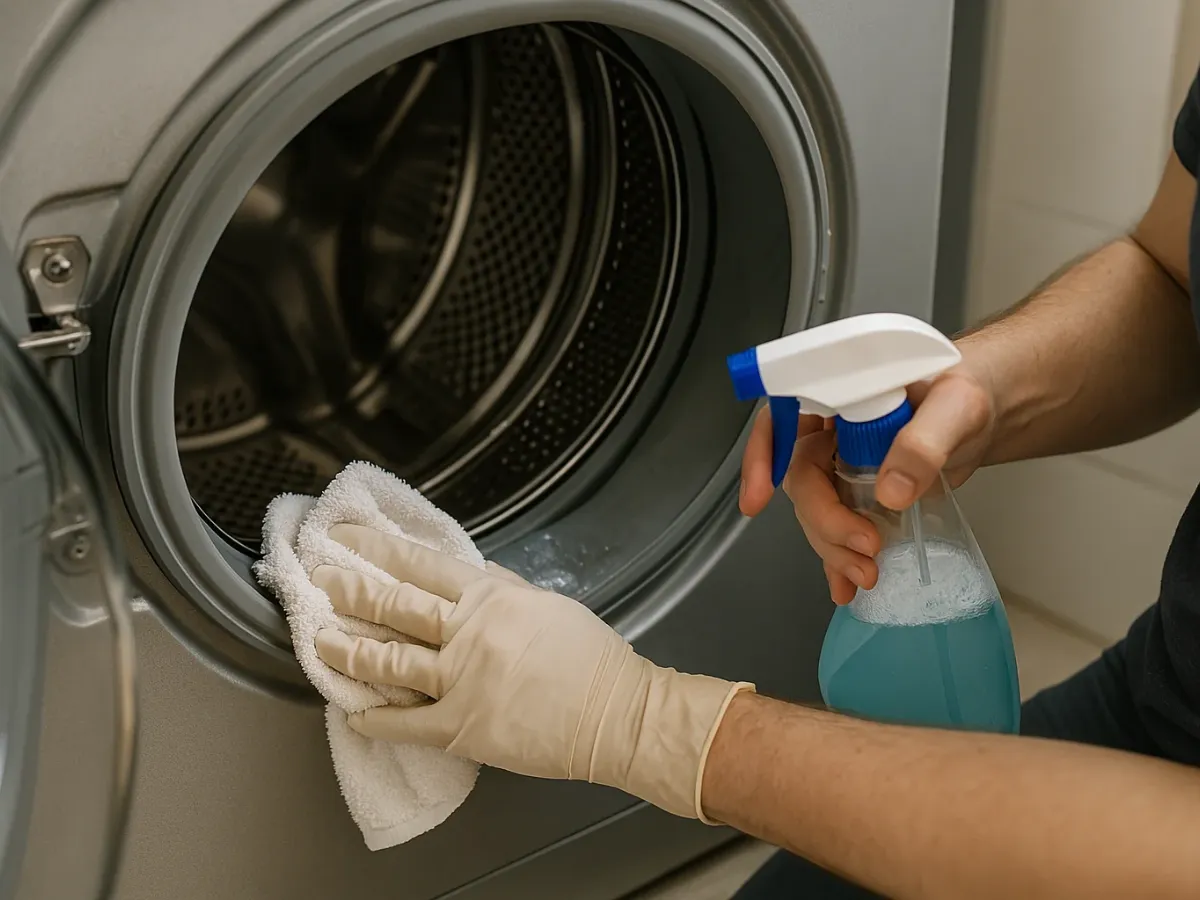War on the Invisible! How to Eliminate Humidity Mites from Your Clothes and Home

Sneezing upon waking, itchy skin, persistent nasal congestion, a stuffy smell in closets... If these symptoms sound familiar, you might have invisible tenants at home: the commonly called "humidity mites". Although the term is somewhat ambiguous, it generally refers to dust mites, microorganisms that, while not dangerous in themselves, thrive in humid environments and can trigger bothersome allergies. Knowing how to eliminate humidity mites, especially from clothes and home textiles, is key to improving your well-being and the hygiene of your surroundings.
In this comprehensive guide, we'll unveil who these "humidity bugs" really are, why humidity is their best ally, and provide you with the most effective strategies to combat them in your laundry and home, ensuring a healthier, allergen-free environment.
Unmasking the "Humidity Mites"
It's important to clarify that there isn't a single species called "humidity mite". This popular term usually encompasses mainly household dust mites (like *Dermatophagoides pteronyssinus*). These microscopic arachnids (impossible to see with the naked eye!) feed on the dead skin flakes shed by humans and pets.
And what does humidity have to do with it? A lot. Dust mites don't drink water; they absorb it directly from the air. Therefore, they need relatively high humidity levels (above 50-60%) to survive and reproduce. A humid environment is their personal paradise.
Occasionally, the term might also refer to other small arthropods that appear in very damp areas or areas with mold, such as mold mites (which feed on fungi) or even springtails. However, dust mites are the primary culprits for allergies associated with indoor humidity and are the most relevant concerning clothes and textiles.
Why Are Dust Mites (and Humidity) a Problem?
Mites themselves don't bite (if you notice bites, it's likely other insects). The real problem lies in their droppings and body fragments. These tiny particles contain proteins that, when inhaled or in contact with skin, act as potent allergens for many people.
The most common symptoms of dust mite allergy include:
- Allergic rhinitis (sneezing, congestion, runny nose, itching).
- Allergic conjunctivitis (red, watery, itchy eyes).
- Asthma (coughing, difficulty breathing, wheezing).
- Atopic dermatitis or eczema (worsening skin lesions, itching).
Since we spend a lot of time in contact with bedding, towels, and clothing, eliminating mites from these textiles is crucial for allergy control.
The Definitive Strategy: Eliminating Mites from Clothes and Textiles
The good news is that mites are sensitive to certain conditions. The most effective strategy relies on controlling temperature and humidity.
1. High-Temperature Washing: The Main Exterminator
This is the most effective method to kill mites and remove their allergens from washable clothes.
- Key Temperature: 60°C (140°F) or Higher. Washing bedding (sheets, pillowcases, mattress protectors), towels, and pajamas at a temperature of at least 60 degrees Celsius is sufficient to kill dust mites.
- Frequency: Wash bedding weekly at this temperature.
- Normal Detergent: You can use your regular detergent. Heat is the primary acaricidal agent here.
- Domestic Limitations: Not all home washing machines reliably reach or maintain 60°C, and washing large items like comforters or blankets at this temperature can be difficult at home.
The LaColada Solution! Our industrial washing machines at LaColada Ponferrada easily reach high temperatures and have large capacities, making them ideal for ensuring mite elimination in all your bedding, towels, and durable garments.
2. High-Temperature Drying: The Finishing Blow
If washing at 60°C isn't possible for some garments (always check the label), drying in a dryer on high heat is another excellent way to kill mites.
- Lethal Heat: A drying cycle at over 60°C (140°F) for at least 15-20 minutes is also effective in eliminating mites.
- Ideal After Washing: Combine washing (even at lower temperatures) with hot drying for double action.
- Precautions: Ensure the garment can go in the dryer and at what temperature. Excessive heat can damage or shrink certain fabrics. Review our guide on whether the dryer shrinks clothes.
- LaColada Advantage: Our industrial dryers allow precise temperature control and fast, efficient drying, ideal for safely eliminating mites.

3. Freezing: The Cold Alternative
For delicate items that cannot be washed or dried with heat (like some stuffed animals or special garments):
- Method: Place the item in a tightly sealed plastic bag and leave it in the freezer for 24-48 hours.
- Effect: Sub-zero temperatures kill the mites.
- Limitation: This kills the mites but doesn't remove the allergens (droppings). After freezing, it's advisable to vacuum the object well or wash it gently if possible to remove allergens.
Got stuffed animals? Learn how to wash stuffed animals safely.
4. Sun Exposure
Putting mattresses, pillows, or rugs in direct sunlight for several hours can help:
- UV and Drying Effect: Direct sunlight and heat help kill mites and reduce moisture.
- Limitations: Less reliable than high-temperature washing/drying, especially for removing embedded allergens.
Environmental Control: Reducing Their Habitat
Eliminating mites from clothes is important, but if you don't control environmental conditions, they will proliferate again. The key is reducing humidity:
- Daily Ventilation: Open windows wide for 10-15 minutes each day, especially in bedrooms, to renew air and reduce humidity.
- Dehumidifiers: If you live in a very humid area or have condensation problems, use a dehumidifier to keep relative humidity below 50%.
- Temperature Control: Maintain a moderate and stable indoor temperature.
- Repair Leaks and Seepage: Fix any sources of excess moisture in the home.
Deep Home Cleaning Against Mites
- Vacuuming with HEPA Filter: Regularly vacuum mattresses, carpets, sofas, and floors with a vacuum cleaner equipped with a HEPA (High-Efficiency Particulate Air) filter. This filter is crucial for trapping tiny allergen particles and preventing them from returning to the air.
- Dusting with a Damp Cloth: Avoid using dry dusters that only move dust (and allergens) around. Clean surfaces with a slightly damp cloth.
- Anti-Mite Covers: Use special zippered covers for mattresses and pillows. They create a physical barrier preventing mites from penetrating and allergens from escaping.
- Minimize Accumulating Textiles: Reduce the number of thick carpets, heavy curtains, stuffed animals, and cushions if you are highly allergic, or wash/clean them frequently.
- Filter Cleaning (Air Conditioning, etc.): Keep filters of ventilation or air conditioning systems clean.
Natural Remedies and Other Tricks
- Essential Oils: Oils like eucalyptus, tea tree, lavender, or clove have acaricidal or repellent properties. You can add them to diffusers, homemade cleaning sprays (diluted in water and/or alcohol/vinegar) for surfaces, or a few drops on a cloth to wipe furniture. Caution: Do not apply directly to skin undiluted and be careful around pets and young children.
- White Vinegar: Excellent cleaner and disinfectant for surfaces. A vinegar and water solution can kill mites on contact and aids cleaning.
- Baking Soda: Useful for deodorizing mattresses or carpets. Sprinkle, let sit for an hour, and vacuum thoroughly (with HEPA filter). It doesn't effectively kill mites on its own but helps with general cleaning.
Frequently Asked Questions about Humidity Mites
What smell do mites hate?
Strong scents like eucalyptus, tea tree, lavender, peppermint, or clove essential oils are thought to repel them.
What disinfectant kills mites?
Heat (60°C+/140°F+), specific acaricides, bleach (with caution), alcohol, or vinegar on direct contact.
How can I eliminate humidity bugs?
Control humidity (<50%), ventilate, clean thoroughly. For dust mites, wash textiles at 60°C+. For other insects, identify and use specific methods.
How to eliminate mites quickly?
The fastest way on textiles is washing and/or drying at high temperatures (+60°C/140°F). For surfaces, vacuuming with a HEPA filter.
Eliminating humidity mites (primarily dust mites) requires a combined approach: directly attacking the mites and their allergens in textiles through heat and cleaning, and controlling environmental conditions, especially humidity, to prevent their proliferation. With consistency, you can create a much healthier home!
Eliminate Mites Easily at LaColada Ponferrada!
The safest and most effective way to kill mites in your bedding, towels, washable stuffed animals, and other garments is high-temperature washing and drying. At LaColada Self-Service Laundry Ponferrada, our industrial machines guarantee reaching the necessary 60°C (140°F) in the wash and provide powerful, controlled drying. Protect your family from allergies and ensure total hygiene for your textiles with our services!
Wash and Sanitize Your Clothes Today!
Sebastián R.
More than 10 years at the helm of Lacolada Lavanderia Autoserivico Ponferrada and repairing industrial and domestic machinery in my spare time. You won't find unverified theories from the internet here, just real solutions tested by someone who gets their hands dirty every day.
Other Humidity-Related Problems

How to Remove Damp Stains from Stored Clothes
Effectively eliminate stains and musty odor from your garments.

How to Clean the Washing Machine Rubber Seal (Mold & Dirt)
Steps to remove mold and keep the seal spotless.

Remove Mold from Clothes Effectively
Eliminate mold stains and spores from your garments.